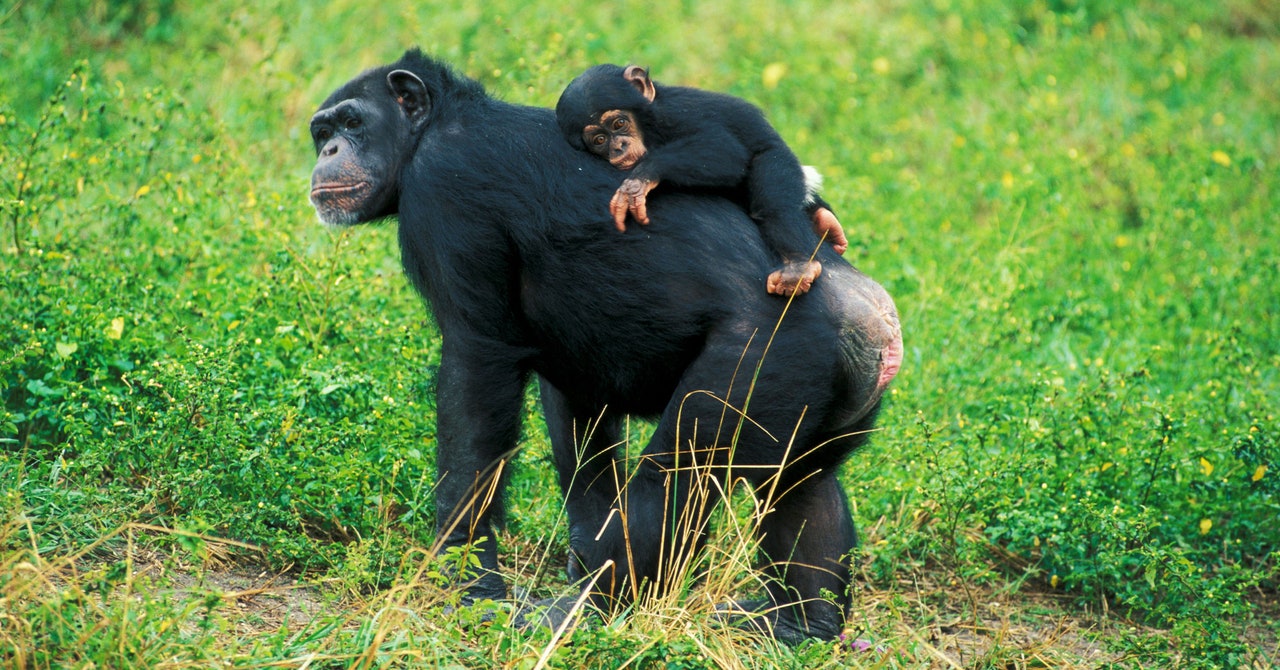
In 2019, Alessandra Mascaro, a research assistant at the Loango Chimpanzee Project, was filming the chimps for fun when she saw a female named Suzee grab a mysterious speck out of the air and hold it to an open wound on her son’s foot.
“It was very difficult to understand what was going on, because it’s something very quick and was never observed before,” says Mascaro, who works at the Loango National Park in Gabon, Africa. And even worse, the images weren’t very high resolution; to avoid influencing the wild animals’ behavior, her footage had been taken dozens of feet away, and her view was obstructed by nearby brush.
“We weren’t really sure what we saw at the beginning,” agrees Lara Southern, another researcher at the site. Without a good internet connection, they had to resort to textbooks to try to look the behavior up. Still no luck. It took a few days for a coworker to suggest that the specks captured on camera were insects. But once Mascaro began looking for the behavior, it seemed like it was everywhere. Over the next 15 months, project researchers noticed chimps rubbing insects in either their wounds or another’s a total of 19 times. “We had to figure out all together that it was not in our imagination, but was really happening,” Mascaro says.
Why were the chimps doing it? In a study published in February in Current Biology, Mascaro and her colleagues detailed the behavior and posed two nonexclusive possibilities. One is that the animals were attempting to medicate themselves. The other is that it’s an instance of prosocial behavior—otherwise known as altruism.
Male chimpanzees often skirmish, making wounds fairly common, although rarely serious. So perhaps unsurprisingly, in all but one of the instances the researchers observed, the wounded chimp was male, and the insect was being applied either by themselves or another member of the group. Because of their distance from the animals, the research team isn’t sure which insects were used, but in at least three instances, chimpanzees took insects from near or under leaves. Then, using either their fingers or mouth, they pressed the whole insect to the wound, in some cases moving it around. It was unclear whether the insects remained in the wounds after this step, or whether the chimps discarded them.
If there were no benefits to rubbing an insect on a wound, the probability of seeing it repeated among an entire community would be very low, Mascaro says. But it’s hard to say exactly what the benefit would be. Self-medicating behaviors have been observed before in the animal kingdom, including among chimps. Some are likely instinctual, like cats or dogs licking their wounds with naturally antimicrobial saliva. Moths, ants, and fruit flies have also been called “animal pharmacists,” creating, seeking out, and consuming foods and substances with medicinal properties.
Other behaviors, however, are not purely instinctual. Instead, they may have elements of culture and generational knowledge tied up in them. Michael Huffman, an associate professor at Kyoto University’s Primate Research Institute, has spent his career researching “zoopharmacognosy,” or animal self-medication. In 2003, he observed a sick chimpanzee in Tanzania’s Mahale Mountains National Park eat a leaf he’d never seen the animals eat before. “What’s the name of the plant?” he recalls asking his field assistant, a game scout for Tanzania’s national parks. “Well, it’s very strong medicine for us,” the assistant replied. It turned out to be Trema orientalis (L.) Blume, a member of the cannabis family that is used in traditional medicine among people in West Africa, Tanzania, East Africa, and Madagascar.


